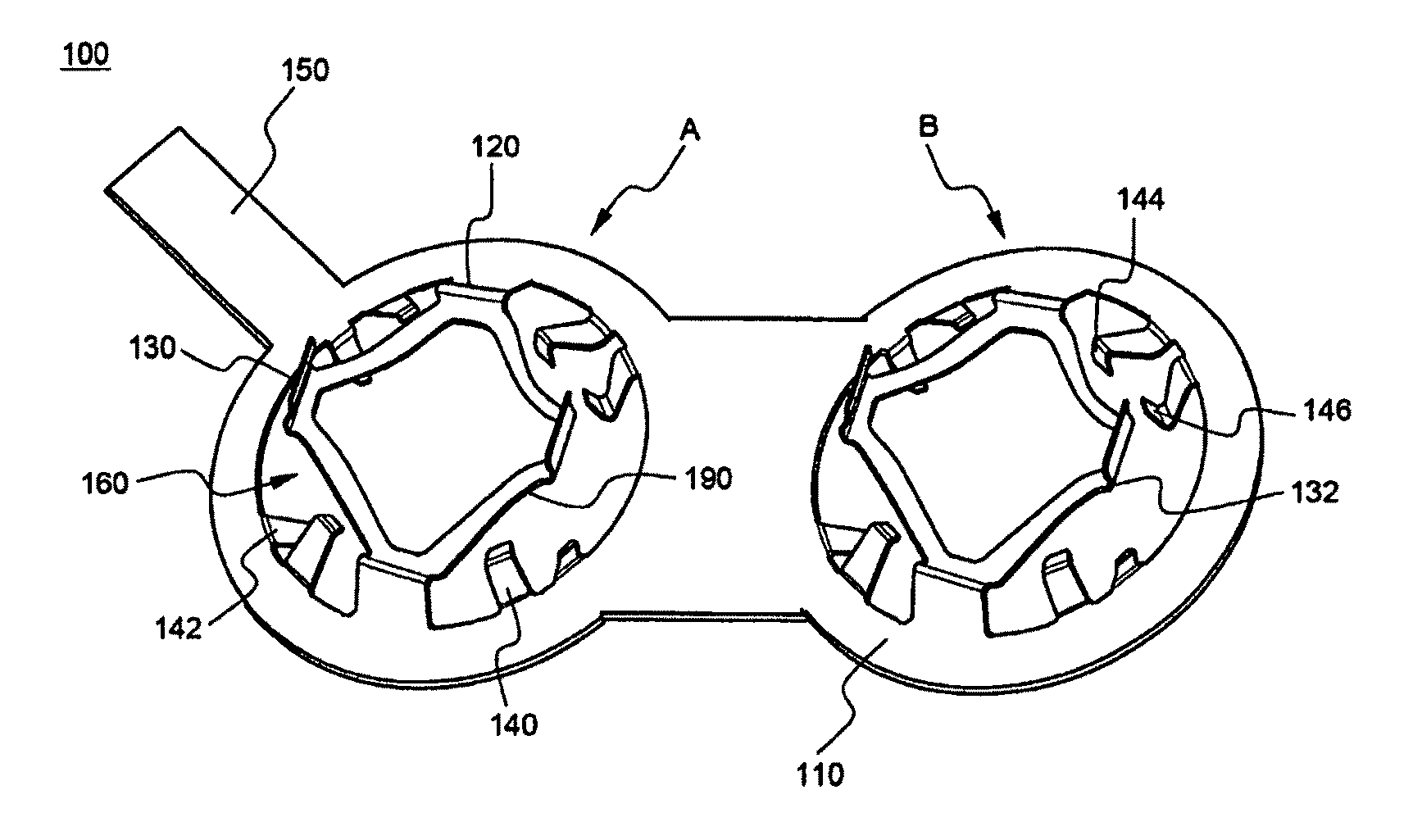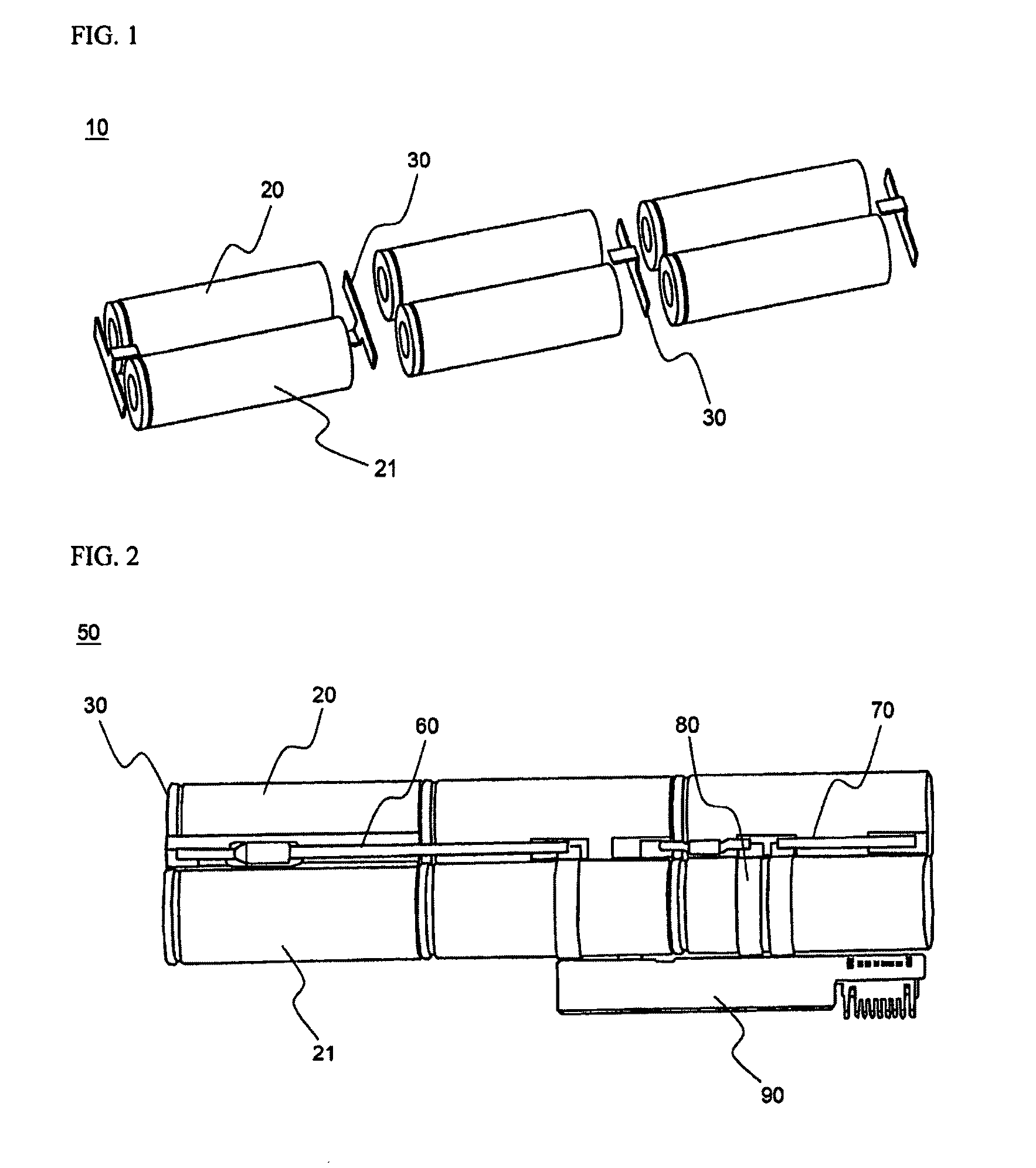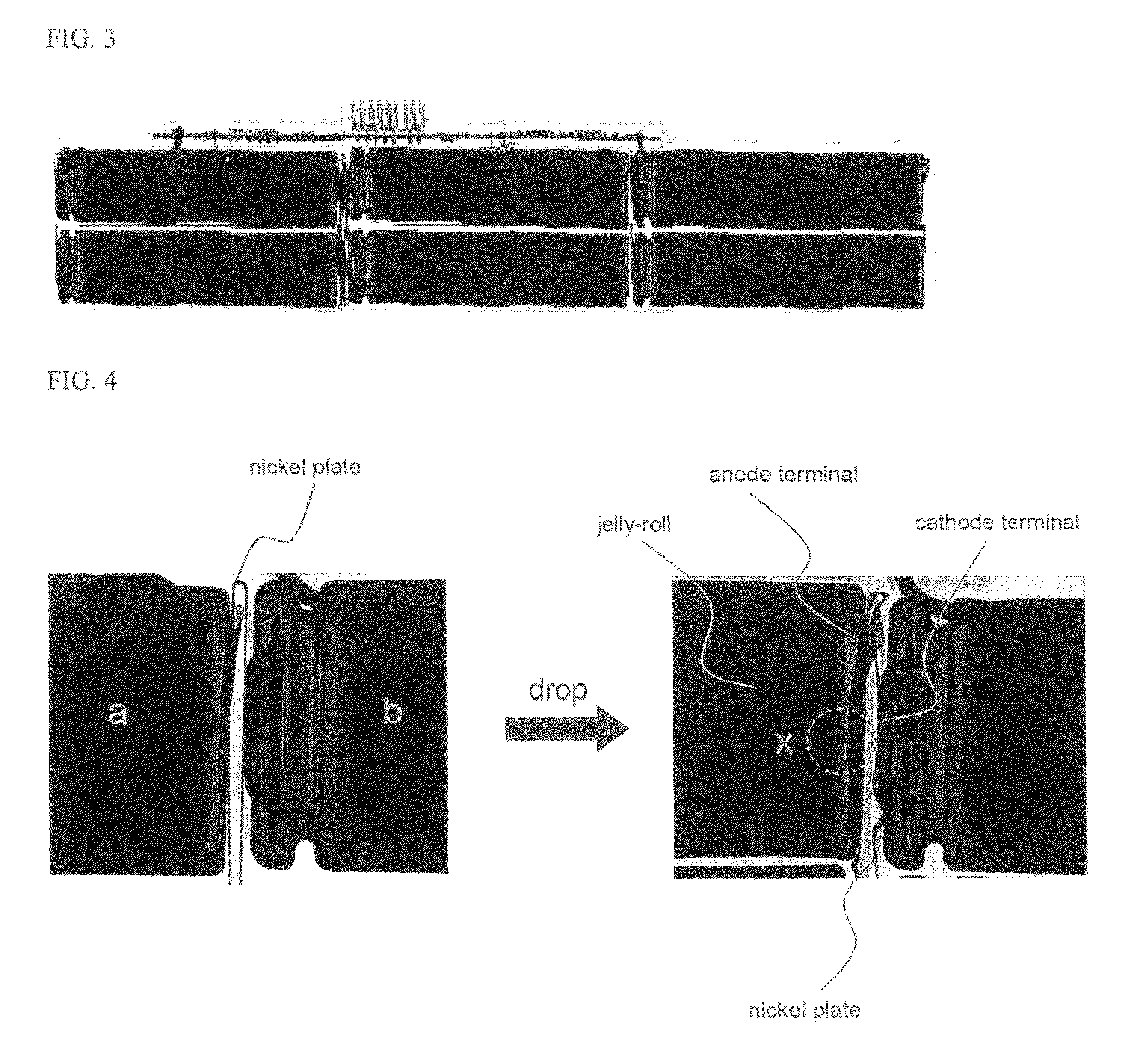Electrical connecting member for secondary battery
a secondary battery and electric connection technology, applied in the direction of battery, cell components, coupling device connections, etc., can solve the problems of low safety in abnormal conditions, battery pack lithium secondary batteries, and difficulty in arranging cylindrical batteries in a stacked structure, so as to facilitate and simply manufacture the connection member, the effect of maximizing the contact area
- Summary
- Abstract
- Description
- Claims
- Application Information
AI Technical Summary
Benefits of technology
Problems solved by technology
Method used
Image
Examples
Embodiment Construction
[0160]Now, preferred embodiments of the present invention will be described in detail with reference to the accompanying drawings. It should be noted, however, that the scope of the present invention is not limited by the illustrated embodiments.
[0161]FIGS. 6 and 7 are perspective views typically illustrating a process for assembling a battery pack according to a preferred embodiment of the present invention.
[0162]Referring to these drawings, the battery pack 400 is constructed in a structure in which a plurality of cylindrical battery cells 302, 304, 306, and 308 are electrically connected to one another via predetermined connection members 100 and 102 in a pack case 200 having no partition.
[0163]Specifically, two kinds of connection members 100 and 102 and four cylindrical battery cells 302, 304, 306, and 308 are located in a receiving part of the pack case 200, while the four cylindrical battery cells 302, 304, 306, and 308 are brought into tight contact with one another, such th...
PUM
| Property | Measurement | Unit |
|---|---|---|
| height | aaaaa | aaaaa |
| angle | aaaaa | aaaaa |
| angle | aaaaa | aaaaa |
Abstract
Description
Claims
Application Information
 Login to View More
Login to View More - R&D
- Intellectual Property
- Life Sciences
- Materials
- Tech Scout
- Unparalleled Data Quality
- Higher Quality Content
- 60% Fewer Hallucinations
Browse by: Latest US Patents, China's latest patents, Technical Efficacy Thesaurus, Application Domain, Technology Topic, Popular Technical Reports.
© 2025 PatSnap. All rights reserved.Legal|Privacy policy|Modern Slavery Act Transparency Statement|Sitemap|About US| Contact US: help@patsnap.com



